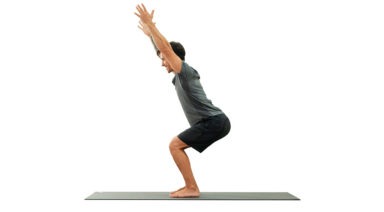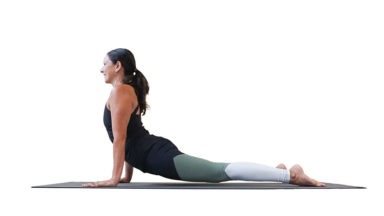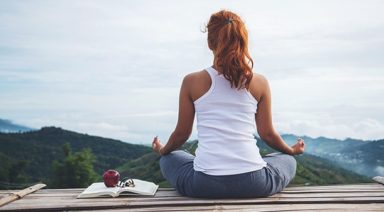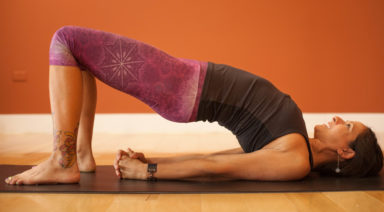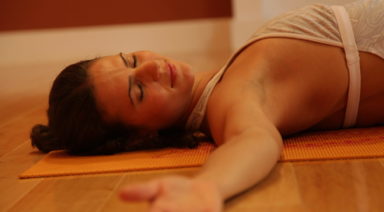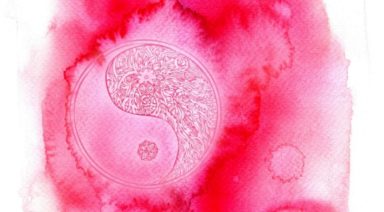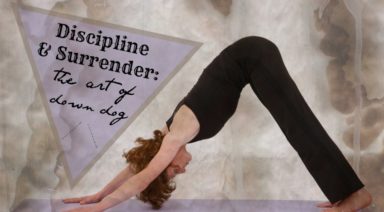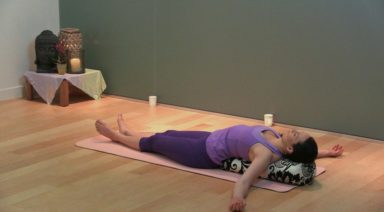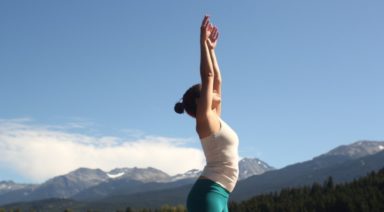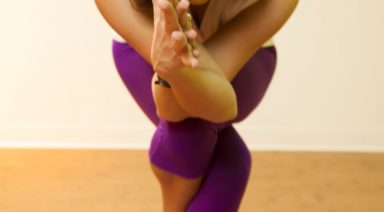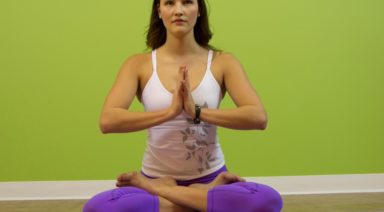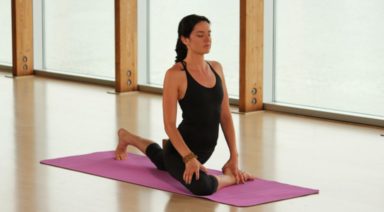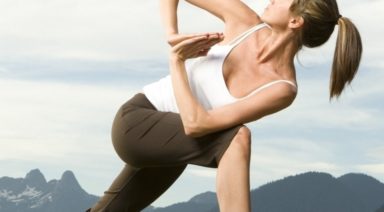Camatkarasana: Wild Thing Pose

ADJUSTMENTS | BENEFITS | SEQUENCING | SANSKRIT | STEPS
Camatkarasana (kam-at-ka-RAS-uh-nah) is a joyful pose to open the chest and shoulders while improving balance.
Philosophy + Origin
One translations of camatkarasana is “the ecstatic unfolding of the enraptured heart.” This poetic image reflects the joy many experience when practicing this pose. Because of its ability to stimulate anahata (heart chakra), practicing this pose is said to bring feelings of love, peace, acceptance, and confidence. By leading with our hearts, we live fearlessly and without restraint.
ADJUSTMENTS/MODIFICATIONS:
- Practice downward facing dog with one leg lifted and the knee bent to open the hip. This can help the body get familiar with the shift in weight in preparation for the eventual flip to wild thing.
- Hand gestures: place your hand over your heart or extend your arm over your head with your hand in gyan mudra.
- Option to enter wild thing from side plank rather than down dog: bring your top leg behind you and then push into your bottom hand and arch the back. Once you’ve found the basic shape, the actions described below will be the same whether you enter from down dog or side plank.
STEP-BY-STEP:
- Begin in downward facing dog. Lift your right leg up and bend your knee, working toward stacking right hip over your left. Keep your core engaged.
- Shift your weight into your left hand.
- Roll to the pinky toe side of your grounded (left) leg.
- At the same time:
- Gently lower your right foot toward the ground behind you.
- Slowly lift your right hand off the ground and bring it to your heart center (middle of the chest).
- When the ball mound of your right foot connects to the ground, press down to lift your hips and chest toward the ceiling. The right knee stays bent while the left leg is extended.
- Press down into the knuckles of your grounded hand and draw your shoulder blades toward each other and away from your ears.
- Option to take your gaze in the opposite direction of your extended leg.
- To release, option to lower hips to the ground or unwind back to downward facing dog. Pause for a few breaths then repeat on the other side.
PREPARATORY POSES:
- Upward facing dog | Urdhva mukha svanasana
- Floor bow pose | Dhanurasana
- Side plank | Vasisthasana
SEQUENTIAL POSES:
- Camel | Ustrasana
- Upward facing bow pose | Urdhva dhanurasana
COUNTER POSES:
- Downward facing dog | Adho mukha svanasana
- Childs pose | Balasana
SANSKRIT:
- Camatkara = surprise, miracle
- Asana = pose
PHYSICAL BENEFITS:
- Stretches chest, shoulders and throat.
- Opens the hips and hip flexors.
- Stretches and strengthens the back.
ENERGETIC BENEFITS:
- Energizes body and mind.
- Opens and stimulates the heart center (anahata).
- Cultivates feelings of universal love and acceptance.
Legal Disclaimer Before participating in any exercise program or using any fitness products or services that may be described and/or made accessible in or through the Gaia Website and/or the Services, you should consult with a physician or other healthcare provider. Read more about Gaia’s Terms Of Use.
Utkatasana: Chair Pose
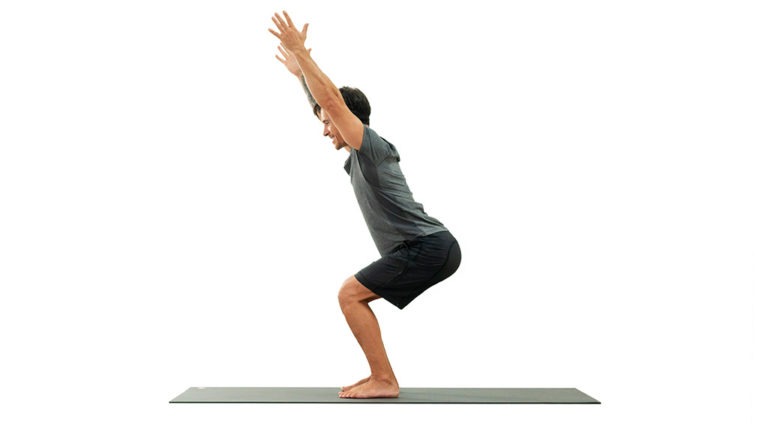
ADJUSTMENTS | BENEFITS | SEQUENCING | SANSKRIT | STEPS
A challenging pose with hidden benefits, utkatasana (OOT-kah-TAHS-anna) works your body inside and out. Aside from strengthening your legs, this powerful pose also improves the health of your diaphragm and stimulates your heart. Practicing regularly will not only increase your physical endurance, it also encourages your chest and arms to open, creating more space in your body energetically.
Philosophy + Origin
While sitting in a chair is a common act for most of us today, chairs were once, and in some locations still are, considered a luxury. A throne in particular is a seat of power, one assumed by leaders around the world. The pose utkatasana, translated to mean powerful pose, invites individuals to sit on their throne, their seat of power. Embracing the challenge of the pose, and recognizing the strength that is generated when assumed thoughtfully and in proper alignment (physically and spiritually), you can begin to refine all aspects of your life, allowing yourself to step into roles of leadership and responsibility with clarity and confidence.



